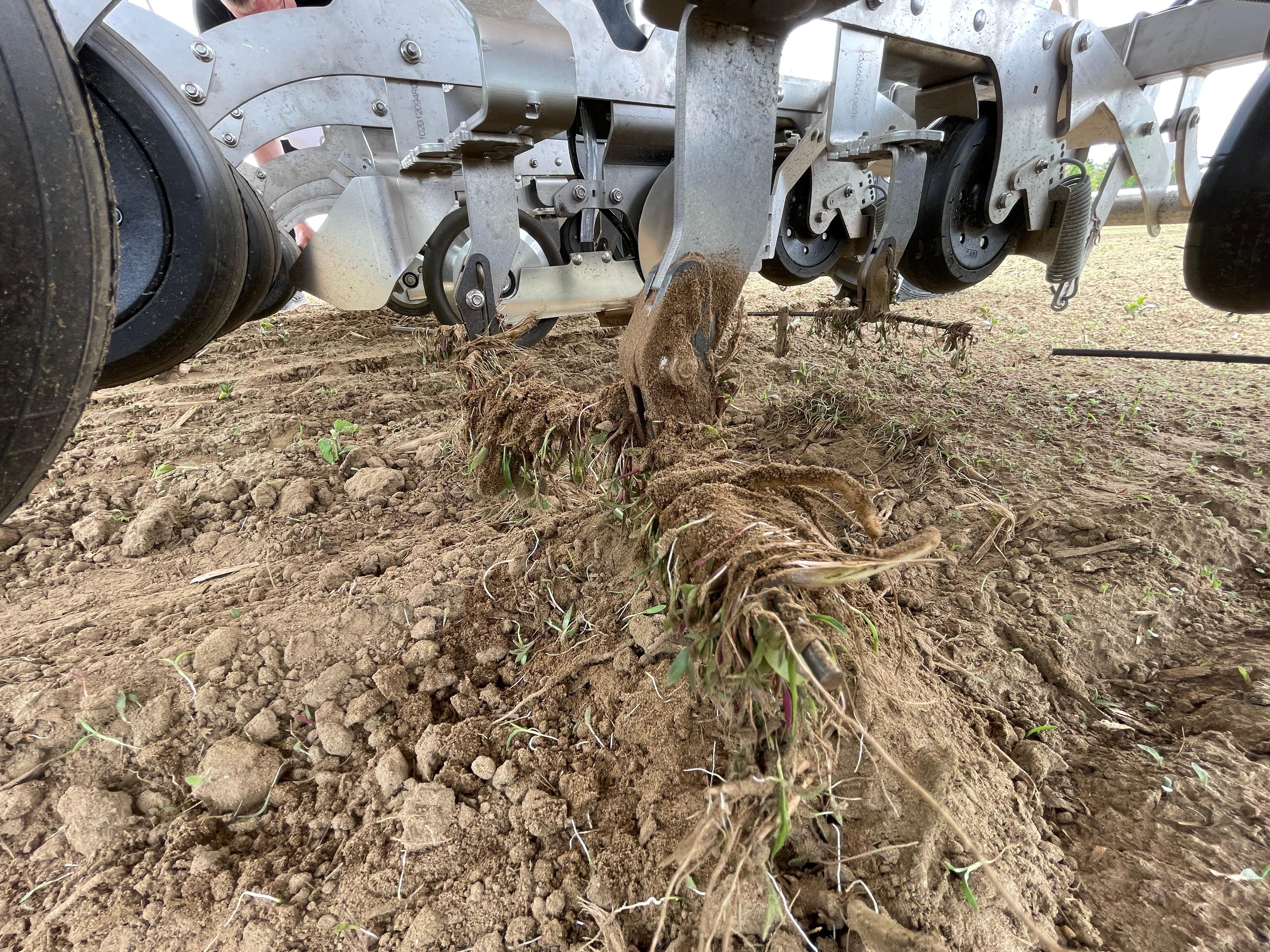Auto Sequence
This article summarizes how the FarmDroid FD20’s auto sequence feature streamlines autonomous weeding and seeding. It offers practical advice to maintain smooth, efficient field operations, minimizing manual interventions and supporting sustainable farming.
The auto sequence is a software feature designed to support the robot during challenging operating conditions. When activated, it automatically pauses the robot, lifts the hitch, and engages the weeding arm against the seeding unit for a duration of 4–10 seconds.
You can enable or disable the auto sequence function using the switch located at the bottom left of page 4.1.2 (see image below).

NOTE 🙂👇
When the auto sequence is set to OFF, the robot will halt and immediately notify you with a message each time an alarm is triggered.
When the auto sequence is set to ON, the robot will automatically perform the sequence a predefined number of times before stopping and sending an alarm notification. This cycle continues until the robot makes a turn in the headland to begin the next pass, at which point the alarm counter resets automatically.
SETTINGS
Directly below the auto sequence switch, you’ll find the feature’s settings on page 4.1.2.2.

- NO. OF ERROR RELATED AUTO SEQUENCES BEFORE STOP: Here, you can set how many times the robot will attempt the auto sequence in response to the same error within a single pass before stopping and alerting you. For example, as shown above, if the same error is detected four times during one pass, the robot will halt and send a notification on the fourth occurrence.
- TIMED AUTO SEQUENCE: Enabling this feature allows the robot to initiate a timed auto sequence autonomously. Its primary purpose is to reduce the likelihood of recurring errors by periodically performing the auto sequence. You can specify how many times the robot should attempt the sequence in response to the same error within a single pass before it stops and issues an alarm. For example, if an error such as a seeding error occurs repeatedly, the robot will execute the auto sequence the set number of times before stopping and notifying you.
- TIME BETWEEN AUTO SEQUENCES [min.] 1-100: Set the time interval between each timed auto sequence
- ACTIVATION TIME [sec.] 4-10: Specify the duration, in seconds, for both timed auto sequences and error related auto sequences.

Collecting this much weed might be a good reason for activating a timed auto sequence.
TIPS AND TRICKS 😉👍
The timed auto sequence is especially effective in reducing errors under demanding field conditions. For example:
- Seed getting stuck in the discs: Activating the weeding arm to tap the seeding unit helps dislodge seeds that may become stuck, ensuring continuous operation in most scenarios.
- Seeding in sticky soil or with lots of crop residues in the field: The auto sequence assists in clearing sticky soil and accumulated residues, particularly near the seed valve housing where buildup could otherwise block seed flow.
- Weeding in dense crops or high weed pressure: Raising the hitch and cycling the weeding arm briefly can help untangle weeds that wrap around the weeding assembly, maintaining optimal performance.
Based on the specific field conditions you encounter, you can adjust how frequently the timed auto sequence activates and set its duration according to your needs.
